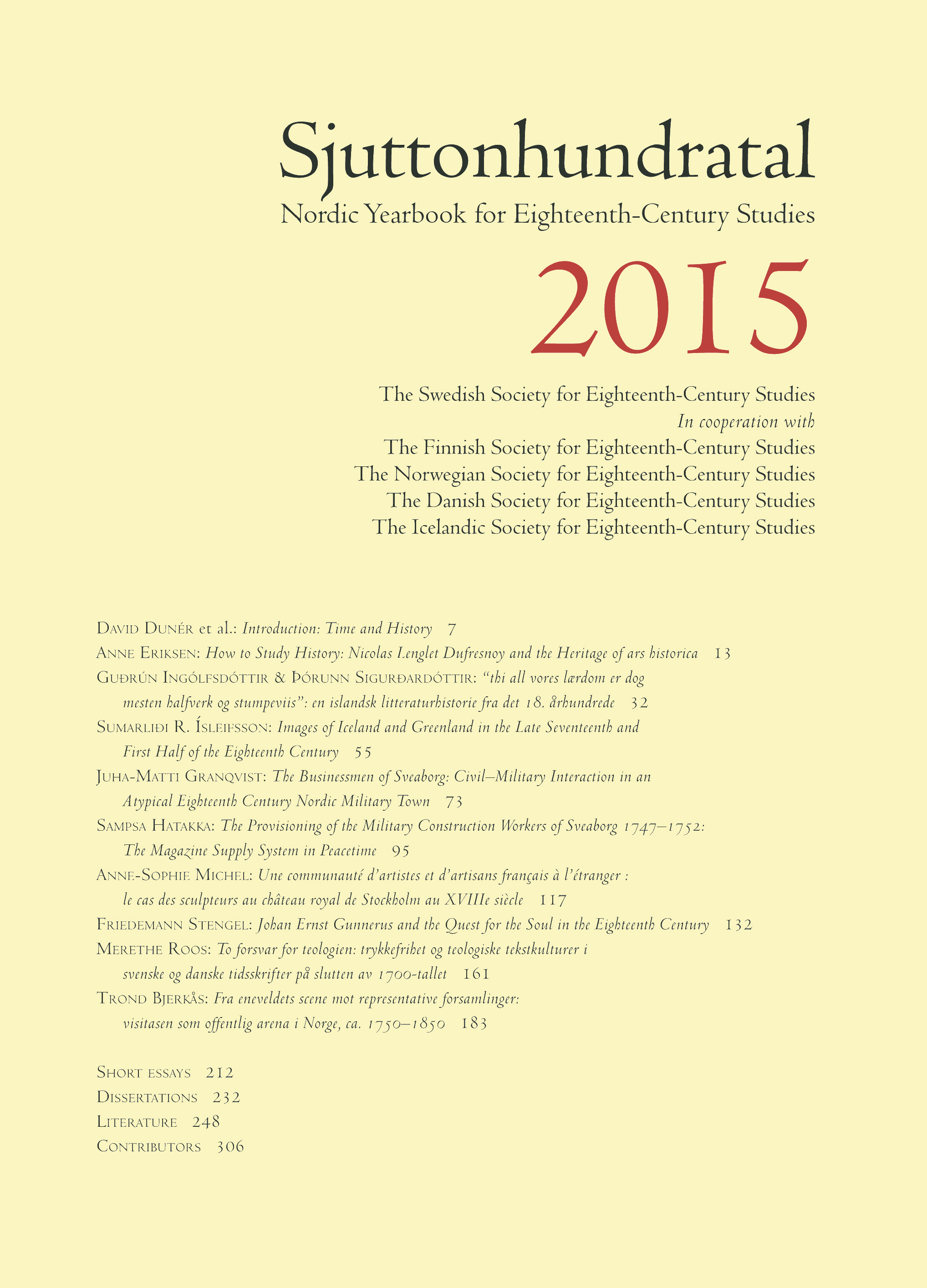The Provisioning of the Military Construction Workers of Sveaborg 1747–1752: The Magazine Supply System in Peacetime
DOI:
https://doi.org/10.7557/4.3527Keywords:
grain magazines, military logistics, military society, military supply system, Sveaborg fortressAbstract
Studies of the military logistics in the early modern period have mainly focused on wartime up to this date. The aim of this article is to demonstrate that supply systems were important during both war and peace. Stores of grain and bread were needed to supply garrisons and prepare for sudden war. Food was also needed if an army was mobilized and used as a workforce in large-scale construction works. This can be clearly seen in the construction work of Sveaborg’s sea fortress in the middle of the eighteenth century. Thousands of soldiers were commanded to take part in it, which required careful planning to keep them supplied annually through the intensive construction periods from spring to autumn. As the soldiers could not buy enough food by themselves, the Crown had to give them bread for sustenance. This in turn required purchasing large quantities of grain, grinding the grain into flour and baking the flour into bread. To manage all this, the whole supply system had to evolve. New magazines, bakeries and mills were established and new personnel hired. Although the construction of Sveaborg was an extraordinary phenomenon, many of these changes had a long lasting legacy.









